What is On-Page SEO and Why is it Essential for Online Success?
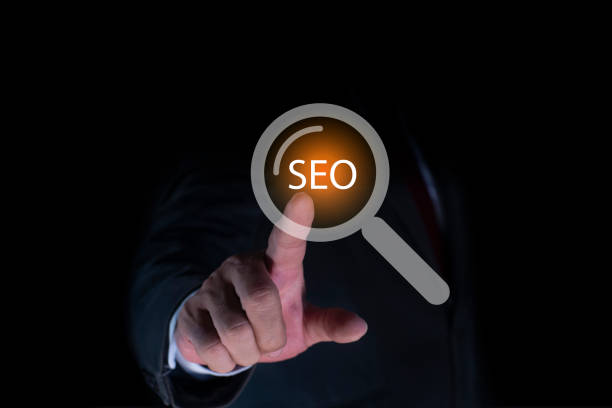
#On_page_SEO (On-page SEO) refers to a set of techniques performed to optimize various elements of a web page to improve its ranking in search engine results.
This process includes optimizing content, HTML tags, images, and other visible aspects and the code behind the page.
The importance of SEO is that it helps search engines better understand the topic and relevance of your page’s content.
Without strong on-page SEO, even with the best content, your website may never reach its full potential in attracting organic traffic.
This is a foundational and educational step that every webmaster and business owner must understand and implement.
In today’s digital world, where the competition for visibility has reached its peak, on-page site optimization is no longer an option, but an absolute necessity.
Search engines like Google constantly update their algorithms to provide users with the best and most relevant results.
These algorithms pay special attention to on-page factors.
From selecting appropriate keywords in the title and text to URL structure and page loading speed, all play a role in determining your final ranking.
A specialized approach to on-page SEO not only helps you rank higher but also provides a better user experience for visitors.
These optimizations make your site more appealing to users and more understandable to search engines.
Therefore, investing time and resources in on-page SEO is a smart investment for the future of your online business and one of the most important pillars of overall SEO success.
Do you dream of a thriving online store but don’t know where to start?
Rasawweb is your comprehensive e-commerce website design solution.
✅ Attractive and user-friendly design
✅ Increase sales and revenue⚡ Get Free Consultation
Key Elements of On-Page SEO: Title Tags, Meta Descriptions, and Keywords
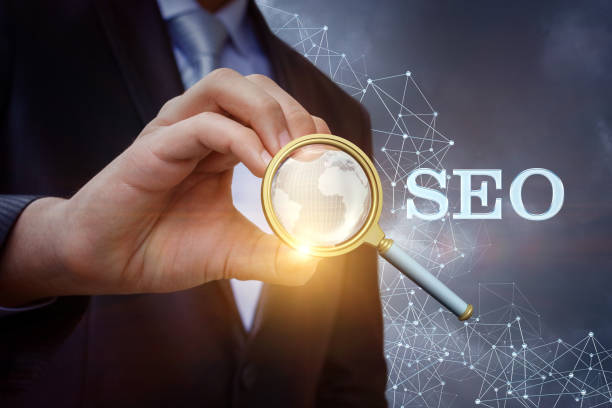
#Keywords, Title Tags, and Meta Descriptions are the backbone of any successful on-page SEO strategy.
The title tag is the first thing both users and search engines see in search results.
This tag should be short, relevant, and contain the main keyword of the page.
Its importance lies in telling search engines what your page is about and motivating users to click on your link.
Meta descriptions are also a brief and engaging summary of the page’s content that appears below the title in search results.
Although meta descriptions do not directly impact rankings, they can significantly increase the click-through rate (CTR) and, consequently, drive more traffic to your site.
These aspects are an important part of your website’s on-page SEO.
The selection and correct use of keywords are at the heart of any SEO campaign.
These words and phrases are what users employ when searching on Google.
A strong keyword strategy involves thorough research to find high-volume and low-competition keywords.
After finding suitable keywords, they should be naturally incorporated into the title tag, meta description, headings (H1, H2, H3), and the main body of the content.
The key is to avoid over-stuffing the text with keywords (Keyword Stuffing), as this action can lead to penalties from search engines.
The focus should be on providing high-quality, valuable content that answers users’ questions and includes keywords organically.
This is an explanatory and practical approach to improving on-page SEO and helps search engines better understand the context and purpose of your page.
Appropriate use of these elements makes the difference between being seen and being ignored in the competitive online space.
Content Optimization: Engaging and User-Friendly Writing

#High_quality_content is the king of SEO, and its optimization for on-page SEO is of utmost importance.
Your content should not only be understandable to search engines but, more importantly, it must be engaging, informative, and valuable to users.
This includes writing fluid texts, using short paragraphs, bullet points, and subheadings (H2, H3) for better information organization.
Engaging content can involve users more and increase their dwell time on the site, which is considered a positive signal for search engines.
Additionally, adding multimedia elements such as images, videos, and infographics can enrich the content and enhance the user experience.
Optimized content should naturally incorporate relevant keywords without sacrificing readability.
This aspect of on-page SEO focuses on quality and interaction.
To optimize your content for both users and search engines, you need to pay attention to various factors.
Content length is one of them; longer and more comprehensive content generally performs better because it can provide more complete answers to users’ questions.
However, quality takes precedence over quantity.
Your content must be original, accurate, and trustworthy.
Including internal links to other relevant pages on your site and external links to authoritative sources can enhance the credibility of your content.
This is a key guideline for producing valuable content.
Furthermore, using CSS for text and element styling can improve readability and visual appeal.
Below, a table outlines important factors in content optimization:
| Factor | Description | Importance in On-Page SEO |
|---|---|---|
| Content Quality and Originality | Unique, accurate, and valuable content | Highest priority, direct impact on ranking |
| Keyword Density | Natural and logical use of keywords | Very important, but avoid keyword stuffing |
| Content Length | Comprehensive and complete content (usually over 1000 words) | Important, indicates content depth |
| Structure and Readability | Use of headings, short paragraphs, bullet points | Important, improves user experience and search engine understanding |
| Internal and External Links | Links to relevant internal pages and reputable external sources | Important, increases credibility and improves navigation |
This table provides an overview of what is important in content optimization and helps you align your strategy with your on-page SEO goals.
URL Structure and Internal Linking: Powerful Site Architecture
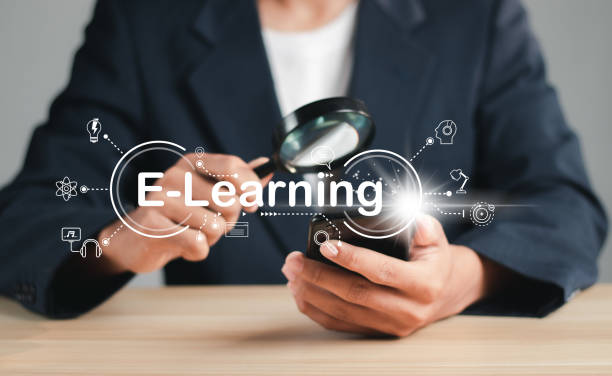
#URL_structure and #internal_linking are two vital factors in on-page SEO that are often overlooked but play a significant role in site architecture and ranking.
An optimized URL should be short, readable, contain the main keyword, and be free of unnecessary characters.
Clean and meaningful URLs not only help users understand the page’s topic but are also easier for search engines to crawl and index.
For example, `yourwebsite.com/services/seo-optimization` is better than `yourwebsite.com/page?id=123&cat=456`.
This is an explanatory approach to improving site structure.
Internal linking refers to the process of connecting different pages within a website through links.
This is crucial for on-page SEO for several reasons:
- Link Equity: Internal links help distribute “authority” or “PageRank” throughout the site.
When an authoritative page links to another page, it transfers a portion of its authority to that page. - User Navigation: Internal links help users easily navigate your site and discover related content, leading to increased dwell time and reduced bounce rate.
- Crawler Accessibility: Internal links help search engine bots discover and index various pages on your site.
A strong internal link structure can ensure that no important page remains hidden from bots.
Creating a hierarchical and logical internal link structure, using descriptive and keyword-relevant Anchor Texts, is essential for optimizing on-page SEO.
This part of the SEO strategy has both a guidance aspect and an analytical aspect, as it requires continuous review and improvement.
A powerful and well-organized site architecture not only helps search engines better understand your site but also significantly enhances the user experience.
Are you tired of losing business opportunities due to not having a professional corporate website?
Rasawweb helps you with professional corporate website design to:
✅ Build a powerful and trustworthy image for your brand
✅ Increase lead generation and your business’s credibility in the eyes of customers⚡ Get a free consultation right now!
Image Optimization: A Vital Role in On-Page SEO

#Image_optimization is one of the key aspects of on-page SEO that can significantly impact your site’s ranking and user experience.
High-quality images can make your content more appealing and help in better understanding the topic, but if not optimized correctly, they can slow down page loading speed and harm your site’s SEO.
To optimize images, the following should be considered:
- File Size Compression: Before uploading, compress image sizes without significant loss of perceived quality.
Tools like TinyPNG or Compressor.io can help in this regard. - Appropriate Format: Use web-friendly image formats like WebP, which have smaller sizes and offer good quality.
JPEG is suitable for photos, and PNG for images with transparency or logos. - Alt Text Attribute: For each image, write a descriptive alternative text (Alt Text) containing a relevant keyword.
This text helps search engines understand the image content and is crucial for users who cannot see images (e.g., visually impaired users or those with slow internet speeds).
This aspect of on-page SEO is both a technical process and a creative one.
The image file name is also important; use descriptive, keyword-rich names (e.g., `on-page-seo-graph.jpg` instead of `IMG_12345.jpg`).
Also, adjust image dimensions to suit the display needs of the website.
Displaying an image larger than necessary only leads to increased page size and reduced loading speed.
Image optimization not only helps improve rankings in Google Image Search but also generally enhances the user experience.
Users quickly leave sites that load slowly.
Therefore, spending time on these details is an investment in the success of your site’s on-page SEO, and this is a valuable guidance section for every webmaster.
These optimizations can be examined analytically to achieve the best performance.
Technical Aspects of On-Page SEO: Loading Speed and Mobile Compatibility
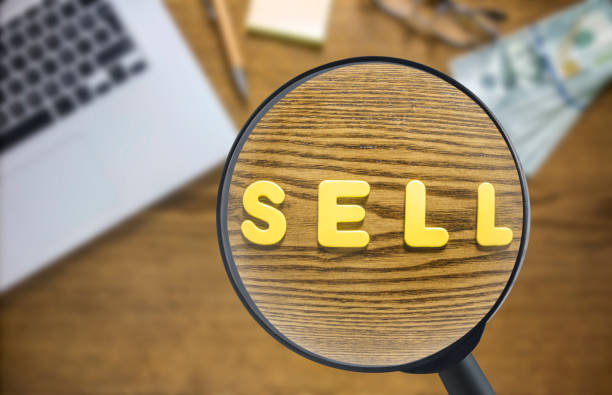
#Website_loading_speed and #mobile_compatibility are two very important technical factors in on-page SEO that Google strongly emphasizes.
In the current era, users expect websites to load instantly and provide a seamless user experience across various devices, including smartphones, tablets, and desktops.
Page speed not only affects user experience but is also considered a direct ranking factor for search engines.
A slow site can lead to an increased bounce rate, reduced user dwell time, and ultimately, lower rankings in search results.
To improve site loading speed, you can take the following actions:
- Image Optimization: As previously mentioned, compressing and using appropriate formats for images.
- Browser Caching: Enabling caching for static files like CSS, JavaScript, and images, so that on subsequent visits, these files are loaded from the user’s browser cache.
- Reduce HTTP Requests: Combining CSS and JavaScript files and removing unnecessary files to reduce the number of requests the browser sends to load a page.
- Code Optimization: Compressing and removing unnecessary characters from HTML, CSS, and JavaScript files.
- Use of Content Delivery Network (CDN): CDNs store your site’s files on servers closer to users, which increases loading speed for users in different regions.
Regarding mobile compatibility (Mobile-friendliness), Google announced years ago that it is an important ranking factor and uses a Mobile-First Indexing approach, meaning it prioritizes the mobile version of your site for indexing and ranking.
A responsive site that displays well on all types of devices not only improves the user experience but also shows search engines that your site is optimized for modern users.
This is a specialized and essential aspect in the discussion of on-page SEO, and you should always follow news updates related to Google’s algorithms to be aware of their impact on your on-page SEO.
User Experience (UX) and On-Page SEO: Alignment for Better Ranking
![]()
#User_Experience (User Experience – UX) and on-page SEO have increasingly aligned.
Google has clearly stated that its goal is to provide the best possible experience to users, and therefore, it considers UX-related factors as ranking signals.
A site with excellent UX helps users easily find what they are looking for, enjoy the site, and stay on it for a longer duration.
This, in turn, sends positive signals such as high dwell time, low bounce rate, and increased engagement to search engines, all of which contribute to improving the site’s ranking in search results.
In fact, improving UX is an integral part of modern on-page SEO strategies.
Key UX elements that impact on-page SEO include:
- Easy Navigation: Clear menus, logical structure, and efficient internal links that guide users easily to their desired pages.
- Content Readability: Using appropriate fonts, sufficient font size, white space, short paragraphs, and subheadings for ease of reading content.
- Loading Speed: As mentioned before, high speed leads to user satisfaction and reduced bounce rate.
- Mobile Compatibility: Ensuring that the site displays correctly and responsively on all devices.
- Attractive Visual Design: Website design that is both aesthetically pleasing and functional.
- Absence of Intrusive Pop-ups: Excessive or intrusive pop-ups can disrupt the user experience and lead to users exiting the site.
A site with strong UX not only helps retain users but also encourages them to return and become loyal customers.
Search engines monitor this user behavior and reward sites that provide a positive experience.
Below is a comparative table between UX elements and their impact on on-page SEO:
| UX Element | Description | Impact on On-Page SEO |
|---|---|---|
| Loading Speed | Time required to fully display content | Higher ranking, lower bounce rate, positive Core Web Vitals signal |
| Responsiveness (Mobile-Friendly) | Ability to display correctly on various devices | Essential for Mobile-First Indexing, better mobile ranking |
| Content Readability | Ease of understanding and reading textual content | Increased dwell time, reduced bounce rate, better ranking |
| Site Navigation | Ease of finding information and moving around the site | Improved search engine crawling, increased user satisfaction |
| Visual Design Quality | Aesthetics, appropriateness, and visual appeal of the site | Indirect impact on bounce rate and dwell time |
This is an engaging yet analytical approach to understanding the overlap between UX and on-page site optimization.
Using Schema Markup and Rich Snippets: Engaging Display in Search Results

#Schema_Markup (Schema Markup) is one of the powerful tools in on-page SEO that helps search engines better understand your page’s content.
Schema is code added to your site’s HTML that provides search engines with more information about the page content (such as content type: article, product, event, recipe, etc.).
This additional information allows search engines to display Rich Snippets in search results.
Rich snippets are additional pieces of information such as product star ratings, price, recipe preparation time, article author’s name, etc., that appear below the title and meta description in search results, offering a more attractive appearance and more useful information to users.
The benefits of using Schema Markup and Rich Snippets for on-page SEO include:
- Increased Click-Through Rate (CTR): Rich snippets, due to their distinct appearance and useful information, attract more user attention and increase the likelihood of clicks on your link, even if you are not ranked higher.
- Improved Visibility in Search Results: By displaying more information, your site becomes more prominent on the search results page (SERP).
- Better Content Understanding by Search Engines: Schema helps search engines understand the context and meaning of your content in a structured way, which can contribute to better rankings.
Schema.org is a collaborative initiative from Google, Microsoft, Yahoo, and Yandex that provides a collection of shared vocabularies for marking up structured data on the web.
This is a specialized and analytical aspect of SEO that requires technical skills, but its impact on your site’s visibility in search results is highly significant.
Proper implementation of Schema Markup gives your site the opportunity not only to rank better but also to appear in a more attractive way to users.
This element of on-page SEO has become increasingly important for search success.
Are you tired of losing business opportunities due to not having a professional corporate website?
Rasawweb helps you with professional corporate website design to:
✅ Build a powerful and trustworthy image for your brand
✅ Increase lead generation and your business’s credibility in the eyes of customers⚡ Get a free consultation right now!
Monitoring and Analyzing On-Page SEO Performance with Powerful Tools
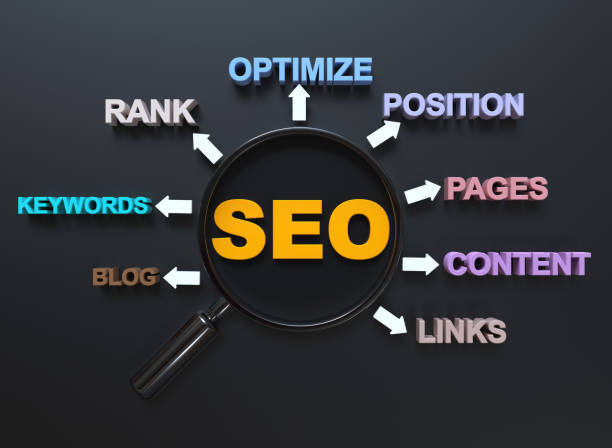
#Monitoring_and_analysis of on-page SEO performance is a crucial step after implementing strategies.
Without measuring results, you cannot understand which tactics have been effective and which need optimization.
Powerful tools like Google Analytics and Google Search Console provide valuable data that allow you to accurately monitor your site’s on-page SEO performance.
Google Analytics provides information about site traffic, user behavior (such as bounce rate, dwell time, pages visited), and traffic sources.
This information helps you evaluate your user experience and content appeal.
Google Search Console is a tool that allows you to view your site’s performance in Google search results.
Using this tool, you can:
- Keywords: See the keywords users used to find your site and your site’s ranking for those keywords.
- Crawl Issues: Identify and fix crawl errors and indexing problems.
- HTML Improvements: Find issues related to title tags and meta descriptions.
- Mobile Compatibility: Check your site’s mobile compatibility status.
- Internal and External Links: Get reports on inbound and outbound links to your site.
Regular monitoring of these tools is crucial for identifying opportunities and problems in on-page SEO.
By analyzing the data, you can make necessary changes to improve rankings and attract more traffic.
This continuous analytical process is the key to sustainable success in SEO.
This is an educational approach for all webmasters.
Third-party tools such as SEMrush, Ahrefs, and Moz also provide more specialized information regarding competitor keywords, link analysis, and the overall SEO health of your site.
Intelligent use of these tools will help you implement and manage your on-page SEO strategy in the best possible way.
Future Trends in On-Page SEO and Continuous Improvement

#Future_SEO_trends indicate that on-page SEO is constantly evolving, and continuous improvement is a fundamental principle for maintaining a competitive edge.
Search engines continuously update their algorithms to provide users with the most relevant and high-quality results.
This means that webmasters and SEO specialists must always stay informed about the latest developments and adapt their strategies accordingly.
The future of on-page SEO is increasingly moving towards a deeper understanding of User Intent and delivering unparalleled user experiences.
Some important future trends affecting on-page SEO include:
- Artificial Intelligence and Machine Learning: AI-powered algorithms like Google’s RankBrain and BERT have enhanced search engines’ ability to understand natural language and the complexities of user queries.
This means content should be more natural, comprehensive, and responsive to users’ implicit questions. - Voice Search: With the increasing use of voice assistants, optimizing for voice search (which often involves longer, conversational phrases) gains more importance.
Your content should be able to answer direct, verbal questions. - Visual Search: Optimizing images with Alt Text appropriate and structured data for visual search is also gaining traction.
- Core Web Vitals: Web performance metrics (such as LCP, FID, CLS) that Google has deemed important ranking factors focus on user experience and loading speed.
- Focus on E-A-T: Expertise, Authoritativeness, Trustworthiness are key factors for quality content, especially in health and financial sectors.
These developments indicate that on-page SEO has shifted from a series of purely technical actions to a more comprehensive approach that includes user psychology, web design, and strategic content creation.
To succeed in the future, you must continuously update your knowledge in this field, experiment, and analyze the results.
This is an educational and endless journey that never stops.
Investing in this knowledge and applying it to your internal site optimization will guarantee your longevity and growth in the online space.
Frequently Asked Questions
| Question | Answer |
|---|---|
| What is On-page SEO? | On-page SEO refers to a set of actions performed within your website to improve its ranking in search engine results. This includes content optimization, site structure, and HTML code. |
| Why is On-page SEO important? | On-page SEO helps search engines understand your page’s content and determine if your content is relevant to searchers. It is the foundation of any successful SEO strategy. |
| What are the key elements of On-page SEO? | Page Title (Title Tag), Meta Description, keyword usage, image optimization, heading structure (H1, H2, …), internal linking, and content quality are key elements. |
| How to optimize the Page Title (Title Tag)? | The page title should include the main keyword, be attractive and encouraging to click, and be between 50 to 60 characters (or appropriate pixels) in length to be fully displayed in search results. |
| What role does Meta Description play in On-page SEO? | A meta description is a summary of the page’s content displayed below the title in search results. Although it doesn’t directly impact ranking, it helps SEO by increasing the click-through rate (CTR). |
| What is the importance of using heading structure (H1, H2, H3) in On-page SEO? | Headings structure the page content and make it easier to read. H1 is typically the main title of the page and should include the keyword. H2 and H3 are used to organize subsections and help search engines understand the content hierarchy. |
| How to use keywords effectively in content? | Keywords should be used naturally and logically throughout the content, including the introduction, body, and conclusion. Avoid keyword stuffing. |
| What steps are involved in optimizing images for On-page SEO? | It includes compressing images to reduce file size, using descriptive file names, adding appropriate alternative text (Alt Text), and optimizing the image title and description. Alt Text is crucial for accessibility and helping search engines understand image content. |
| What is Internal Linking and what are its benefits? | Internal linking means creating links from one page on your website to another page on the same website. This helps users easily navigate your site, distributes page authority across the site, and helps search engines better understand your site’s structure. |
| What is the importance of content quality in On-page SEO? | High-quality, accurate, comprehensive, and valuable content for users is the cornerstone of On-page SEO. Search engines prefer content that meets user needs. Quality content leads to longer user dwell time and lower bounce rate, which are positive SEO signals. |
And other services of Rasawweb Advertising Agency in the field of advertising
Smart Social Media: A combination of creativity and technology to increase click-through rates through precise audience targeting.
Smart Conversion Rate Optimization: A fast and efficient solution for online growth focusing on Google Ads management.
Smart Advertising Campaign: A combination of creativity and technology to increase website visits through SEO-driven content strategy.
Smart Link Building: A creative platform for improving customer behavior analysis using real data.
Smart Data Analysis: A specialized service for customer acquisition growth based on attractive user interface design.
And over hundreds of other services in the field of internet advertising, advertising consultation, and organizational solutions
Internet Advertising | Advertising Strategy | Advertorial
Resources
- On-Page SEO Tutorial on Modirweb
- Complete On-Page SEO Guide on Mihanblog
- Website Structure Optimization for SEO on Seogama
- Importance of Internal Linking on Webramz
? Do you want your business to shine in the digital world and reach the peak of visibility? Rasawweb Afarin, a leading digital marketing agency specializing in providing comprehensive and results-oriented solutions, including SEO-optimized website design, helps you establish a powerful and influential online presence. With us, your digital goals are not just a dream; they are tangible realities.
📍 Tehran, Mirdamad St., next to Central Bank, Southern Kazeroun Alley, Ramin Alley, No. 6




